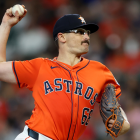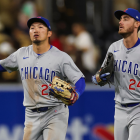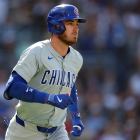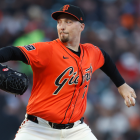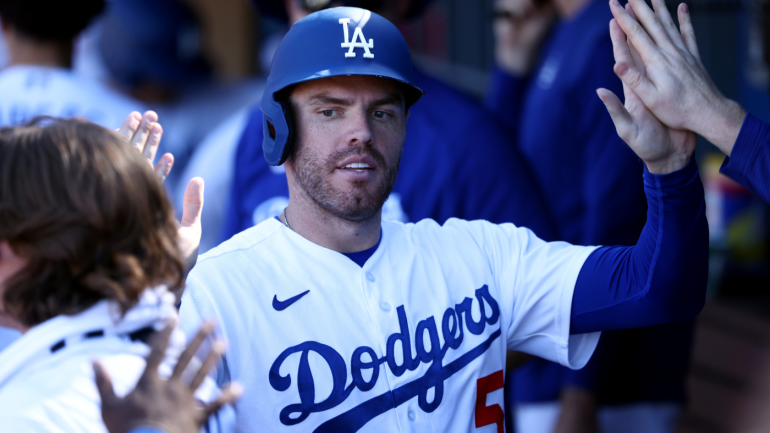
The 2022 Major League Baseball postseason? It looms! This year's playoffs mark the debut of the new format that was negotiated as part of the semi-new collective bargaining agreement. The field expands from 10 teams to 12, and the bygone Wild Card Game has been replaced with the best-of-three Wild Card Series, which doubles as the opening round. In order to get from 10 teams to 12, each league has added one wild-card entrant. But that isn't the only wrinkle, as we're about to detail.
The format
The two division winners with the best records in each league are rewarded with a first-round bye. For the National League this year, that means the Los Angeles Dodgers and the Atlanta Braves will bypass the Wild Card Series and go straight to the best-of-five Division Series. In the American League, the Houston Astros and the New York Yankees have earned the same privilege.
The remaining division winner in each league automatically gets the No. 3 seed, which means they'll be pitted against the bottom wild-card team in the opening round. In the NL, that means the NL Central-champion St. Louis Cardinals will face the No. 6 seed (the Philadelphia Phillies) in the Wild Card Series, while the top wild-card team (the New York Mets), gets matched up against the second No. 5 seed (the San Diego Padres).
In the AL, it's of course the same format applied to a different suite of teams. As noted, the Astros and Yankees will have byes. That leaves the No. 3 seed Cleveland Guardians, winners of the American League Central, to face the No. 6 seed (Tampa Bay Rays). That leaves the top wild-card team (the Toronto Blue Jays) to face the second wild-card team (the Seattle Mariners).
Of note is that the higher seed in each of the best-of-three Wild Card Series will host all the games of that series. That means the Cardinals, Mets, Guardians, and Blue Jays will host all of those first-round games even if their respective series goes the full three games. On the other side of things, the Phillies, Padres, Mariners, and Rays could see their 2022 postseason runs end without enjoying a playoff home game.
There's no re-seeding after each playoff round, but ideally that's a wrinkle that will be added at some point in the future.
With the addition of the Wild Card Series this year, MLB has done away with Game 163 tiebreakers. In past years, teams with identical records that tied for a division crown or playoff spot squared off in an extra game to break the tie. This year, the tiebreaker is determined based on head-to-head record (more on that here). The Brewers, for example, could end the season with the same record as the Phillies. But since the Phillies took the season series, 4-2, they own the tiebreaker and get the playoff spot.
The schedule
The owner-implemented lockout during the spring pushed back the start of the regular season and resulted in a somewhat cramped calendar – the regular season doesn't end until Oct. 5. That plus the extra playoff games resulting from expansion means postseason off days won't be as frequent this time around. Here's what's worth knowing about all that:
The best-of-three Wild Card Series will be played on three consecutive days, which means there is no off-day within any of the opening-round series. There are also no off days between Games 4 and 5 of the Division Series, or between Games 5 and 6 of the League Championship Series. Travel could be very challenging should teams on opposite coasts meet (like, say, Dodgers vs. the NL East champs in the NLCS). The World Series follows the usual 2-3-2 format with off-days between Games 2 and 3 and Games 5 and 6. However, if the 2022 World Series goes the full seven games, then it won't end until the night of Nov. 5.
You can go here to check out the full postseason schedule for 2022.
The rules
It's worth recalling that the handful of structural adjustments in place for the regular season will not all be part of the playoff rule book. Specifically and most notably, there will be no automatic runner on second base should any playoff game reach extra innings, a rule that has been in place for the past handful of regular seasons in order to cut down on marathon extra-inning games and to cut down on pitcher workloads that result from said marathon extra-inning games. In the playoffs, however, the game will proceed in the usual manner until one team wins in the usual manner. As for the universal designated hitter rule, which means that the American League and National League now use the DH, it's a permanent presence in MLB now, and it all also be a part of the postseason.
As for postseason rosters, they will consist of 26 players, just as the regular-season rosters did until they (modestly) expanded for September.
Just to eliminate any confusion, the major changes in line for the 2023 season and beyond will not be part of the 2022 postseason landscape. Those changes are the implementation of a pitch clock, the banning of infield shifts, and the use of larger bases. Again, those new wrinkles will begin next season and will not be part of the upcoming playoffs.















